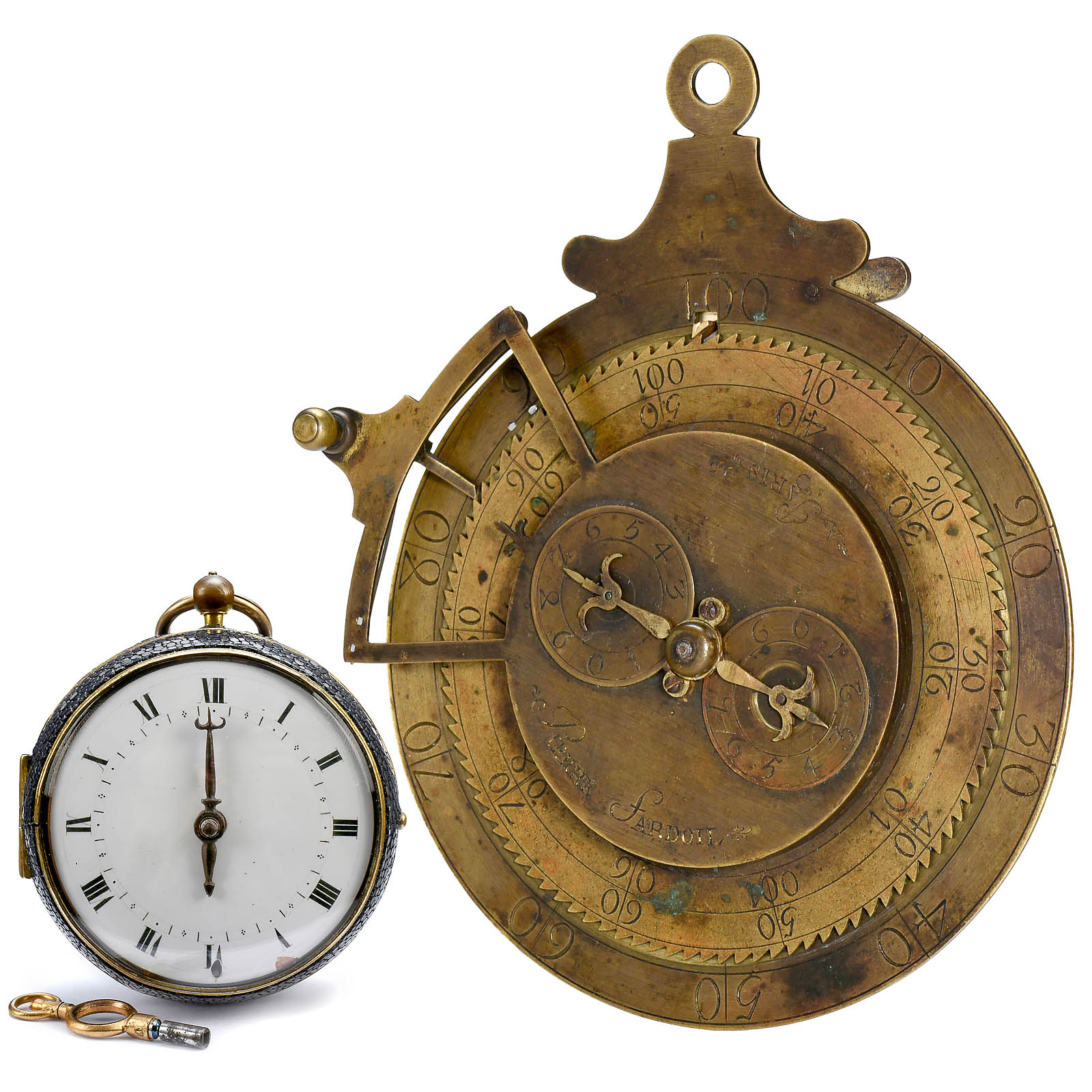

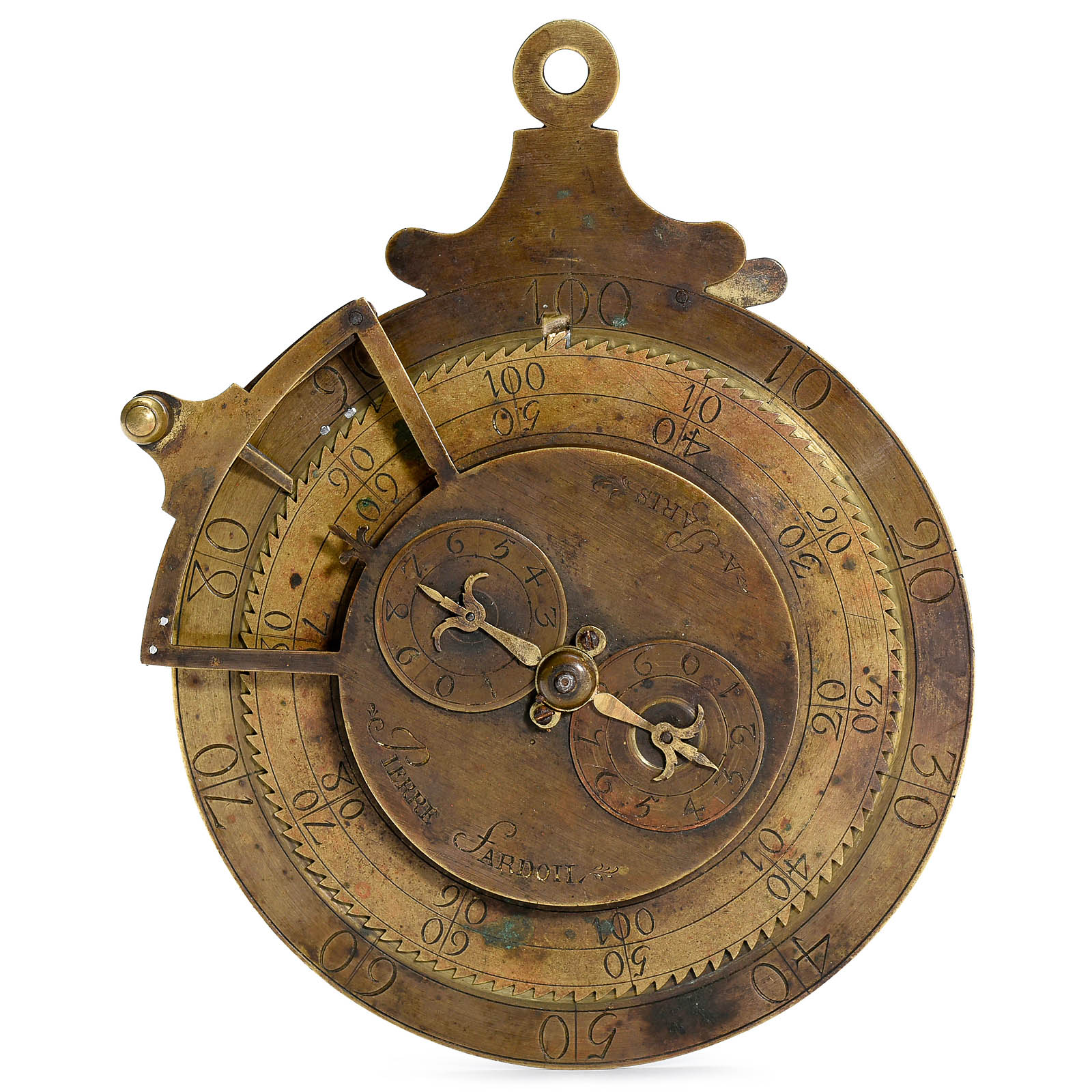

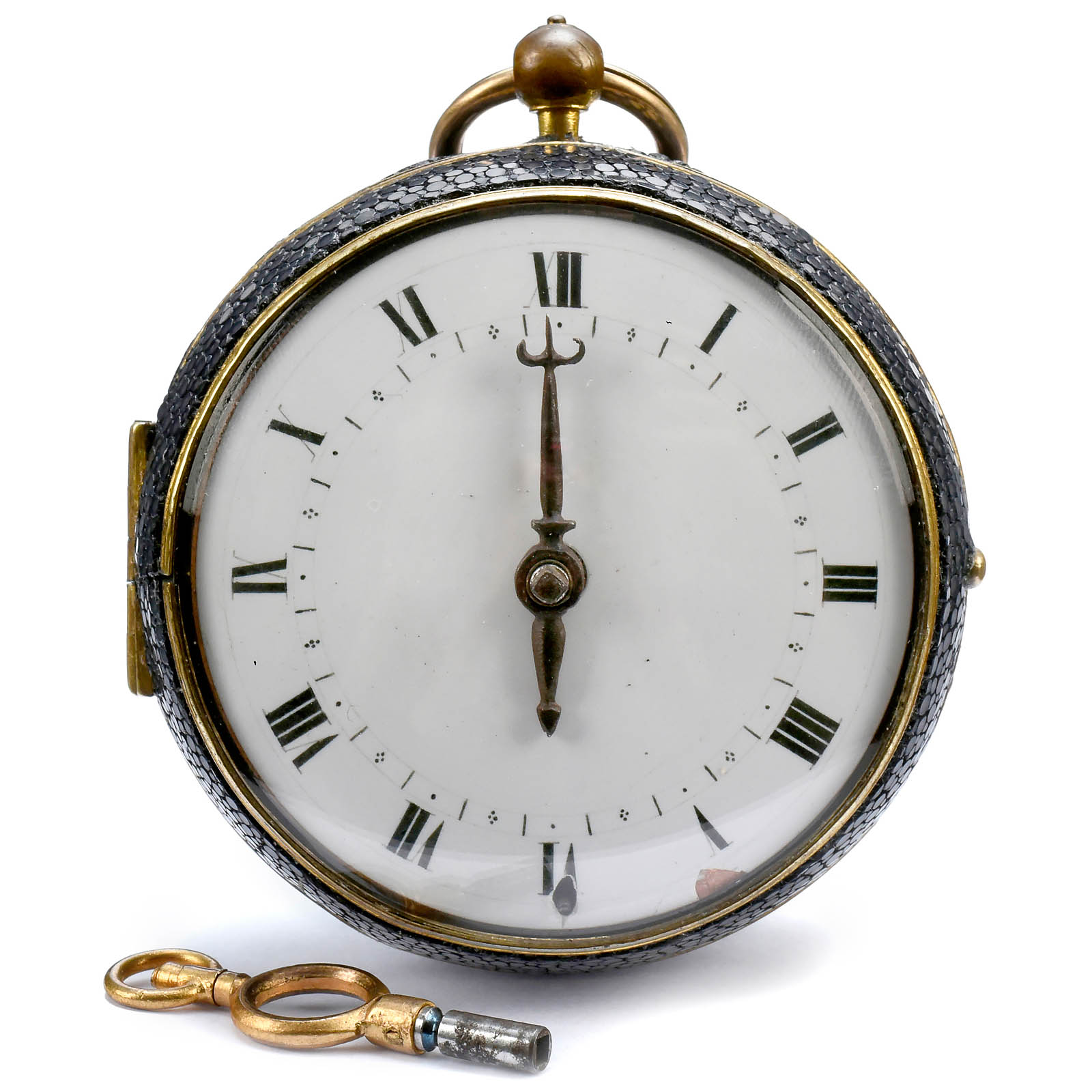
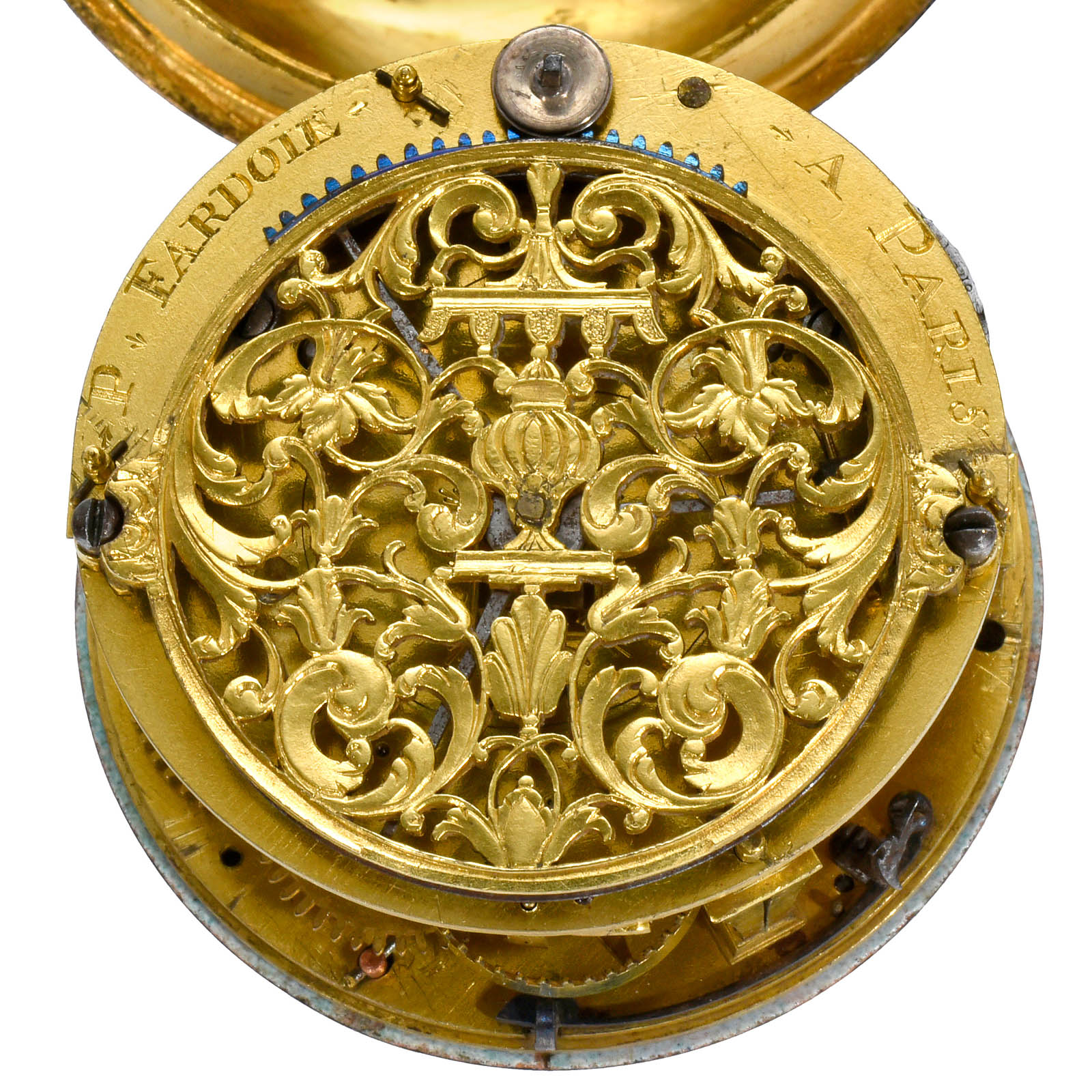
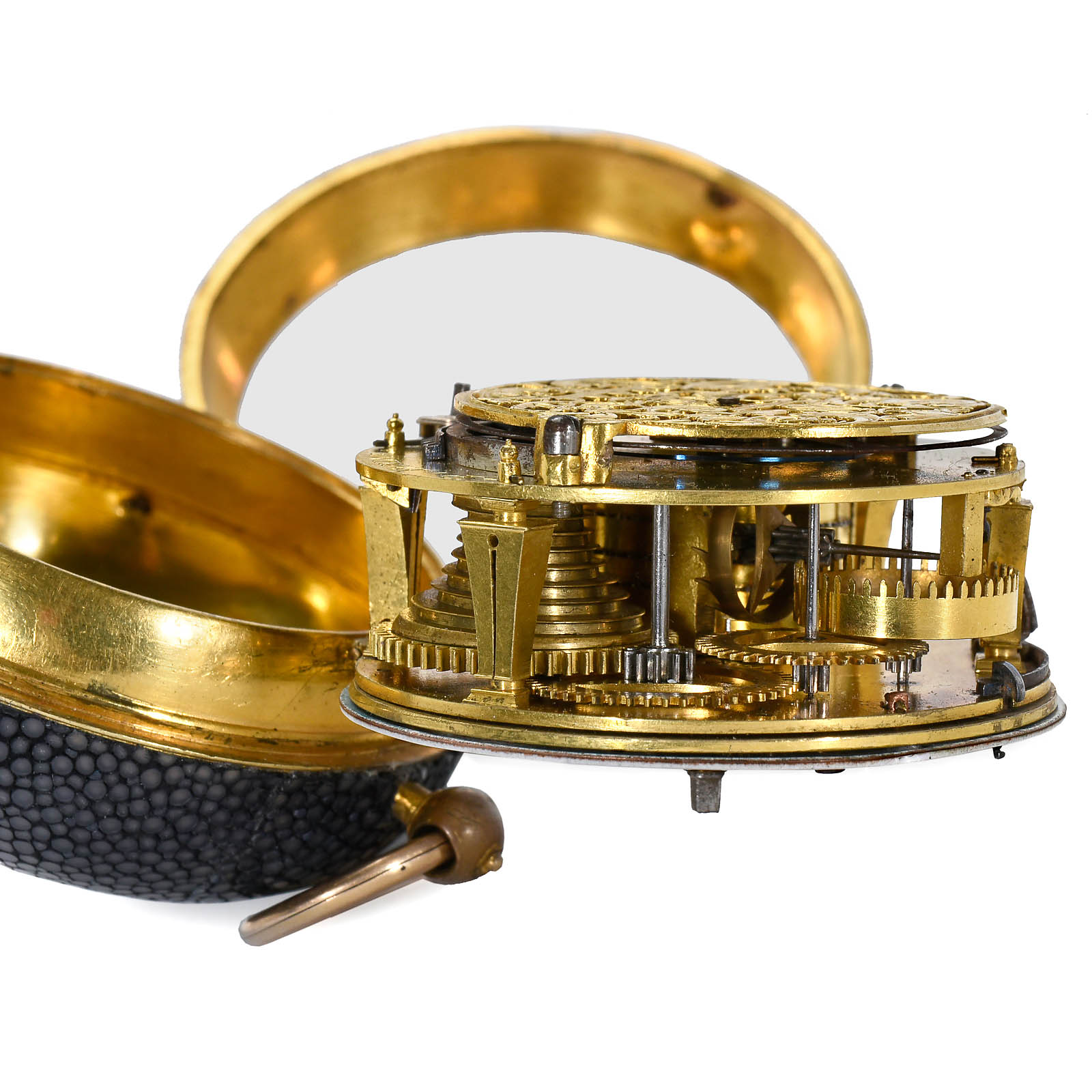
The Adding Machine of Pierre Fardoil, c. 1700
拍品号:20150530-020
预估价:€ 30000-70000 欧元
起拍价:€ 10000 欧元
成交价:
€ 67631.9 欧元
外观成色:2
布雷克拍品等级是为了方便竞买人判断拍卖品的成色而设置的。布雷克等级用1到6级来标注外观和功能的成色,(从非常好到非常差)。
在目录图册里用括号里的2个数字来表示,前一个数字表示外观成色的级别,后一个数字表示功能成色的级别。如(3/2)表示外观成色是3(满意的),功能成色2(好)。
成色 定义参照下列标准: 1 - 非常好 (未使用过,没有使用痕迹) 2 -
好 (新,极少的使用痕迹) 3 - 满意的 (普通的使用痕迹) 4 -
及格的 (明显的使用痕迹,某个非主要部件是后配的) 5 - 有缺陷的 (极明显的使用痕迹,
某个主要部件是后配的,功能上有缺陷,需要修理) 6 - 非常差 (严重破损, 缺少重要部件)
功能成色:2
布雷克拍品等级是为了方便竞买人判断拍卖品的成色而设置的。布雷克等级用1到6级来标注外观和功能的成色,(从非常好到非常差)。
在目录图册里用括号里的2个数字来表示,前一个数字表示外观成色的级别,后一个数字表示功能成色的级别。如(3/2)表示外观成色是3(满意的),功能成色2(好)。
成色 定义参照下列标准: 1 - 非常好 (未使用过,没有使用痕迹) 2 -
好 (新,极少的使用痕迹) 3 - 满意的 (普通的使用痕迹) 4 -
及格的 (明显的使用痕迹,某个非主要部件是后配的) 5 - 有缺陷的 (极明显的使用痕迹,
某个主要部件是后配的,功能上有缺陷,需要修理) 6 - 非常差 (严重破损, 缺少重要部件)
制造商:
制造年份:
序列号:
拍品描述
Very early machine for adding and subtracting numbers from 0-100 in the shape of an astrolabe. The machine - signed "Pierre Fardoil à Paris - is hand-crafted in steel and brass, measures 5-1/2 inches in height and is in perfect working condition. Traces of silver indicate that this fine instrument was originally silver-plated. – Fardoil's contribution to the development of mechanical calculating devices is the introduction of his mechanism which enables the operator to read the result without counting the dividing marks on a circular scale of a disc shaped adding machine. Fardoil achieved this improvement by utilizing a planetary gear turning two round scales underneath two stationary hands ten times over the entire range of the calculator. The two scales show the numbers from 0–9 for additions and for subtractions respectively. This simple use of a planetary gear enabled Fardoil to provide a read-out in the range of 0–100 without the need of a carry-over from 9 to 10, 20, 30, etc. – Unlike the very early calculators by Schickard, Leibniz, Pascal, Grillet, and others, Fardoil's calculator was a true "pocket calculator" as it is flat and would fit in any pocket. – Instructions on how to operate the machine are included in German and English. – Calculators manufactured by hand before massproduction, which started around 1875, are extremely scarce; there are less than ten other models of calculators known which were invented or made before circa 1700. Fardoil invented his adding machine approx. 80 years before the French Revolution! King Louis XVI – executed in 1793 - was not even born when Fardoil built his adding machine. Louis XVI was born only about 50 years later, in 1754. – Pocket watches were already made in large numbers as everybody had a need to know time and pocket watches were a status symbol at the time. – The Fardoils were a watch-making dynasty. Pierre Fardoil was one of the sons of Pierre Fardoil senior from Blois, France, who died in 1669. Fardoil became a registered master watchmaker in 1684. He was a Huguenot and fled France for London due to religious persecution; there he worked under the name Peter Fardoil. The revocation of the Edict of Nantes in 1685 caused the Huguenots, mostly protestants, to lose their civil rights and resulted in their escape to neighboring countries as refugees. Around 1700 Fardoil returned to France and set up his workshop at the Place Dauphine in Paris as watchmaker for the King, (maitre horloger du Grand Conseil du Roy). Fardoil died in 1722. Among many ingenious designs, Fardoil also invented his famous dividing engine for wheels with 102 to 800 teeth, built an astronomical pendulum clock for King Louis XV, the Grand Dauphin, and built many pocket watches which were characterized by novel and unusual features. Pierre Fardoil is also well known as the first watchmaker to create full-enamel dials. His valuable clocks and pocket watches are today part of famous museums such as the "Musée de l'Observatoire", the "Musée des Arts et Metiers" (both in Paris), "Musée International d'Horlogerie La Chaux-de-Fonds", Switzerland, and the "Science Museum", London, which has in its collection a pocket watch dated c. 1700. Fardoil's pocket watches are also to be found among important private collections. The astronomical pendulum clock survived to this day and is part of the collection of the "Musée de L'Observatoire", Paris, exhibited at the Château de Meudon,(Louis VX, Le Grand Dauphin, died there in 1711.) – Literature: "Thiout's Traitéd'Horlogerie", Paris, 1741, S. 55, tabel 23". Charles Holzapfel, "Turning and Mechanical Manipulations", Vol. II, 1856, S. 639. Robin Gwynn. “Huguenot Heritage: The History and Contribution of the Huguenots in Britain". There is another example of Fardoil's calculator known
to exist. This example was donated to the "Musée des Arts et Metiers, Paris" in 1866 by the French "Académie des Sciences." However, this second example mysteriously vanished; last records date back to 1942. This Fardoil calculator was cataloged under the inventory number 7477 and described as "Cadran pour faire les additions et les soustractions, par P. Fardoil (1720)." This exceedingly rare and early adding machine is of superb museum quality and one of the earliest machines in the history of mechanical calculators.
to exist. This example was donated to the "Musée des Arts et Metiers, Paris" in 1866 by the French "Académie des Sciences." However, this second example mysteriously vanished; last records date back to 1942. This Fardoil calculator was cataloged under the inventory number 7477 and described as "Cadran pour faire les additions et les soustractions, par P. Fardoil (1720)." This exceedingly rare and early adding machine is of superb museum quality and one of the earliest machines in the history of mechanical calculators.
Also included in the lot is a Single Hand Pocket Watch by "Pierre Fardoil", c. 1710, with fuse movement signed "P. Fardoil a Paris", with polished green rayskin- covered fire-gilded case, domed glass, enameled dial with Roman numerals, lance-shaped hand, gilt plate movement, pierced and engraved balance cock, Egyptian pillars, key-wind spindle from the front, Ø 2 3/5 in., running condition! With key.
成色说明
布雷克拍品等级是为了方便竞买人判断拍卖品的成色而设置的。布雷克等级用1到6级来标注外观和功能的成色,(从非常好到非常差)。
在目录图册里用括号里的2个数字来表示,前一个数字表示外观成色的级别,后一个数字表示功能成色的级别。如(3/2)表示外观成色是3(满意的),功能成色2(好)。
成色 定义参照下列标准: 1 - 非常好 (未使用过,没有使用痕迹) 2 -
好 (新,极少的使用痕迹) 3 - 满意的 (普通的使用痕迹) 4 -
及格的 (明显的使用痕迹,某个非主要部件是后配的) 5 - 有缺陷的 (极明显的使用痕迹,
某个主要部件是后配的,功能上有缺陷,需要修理) 6 - 非常差 (严重破损, 缺少重要部件)
发表评论

